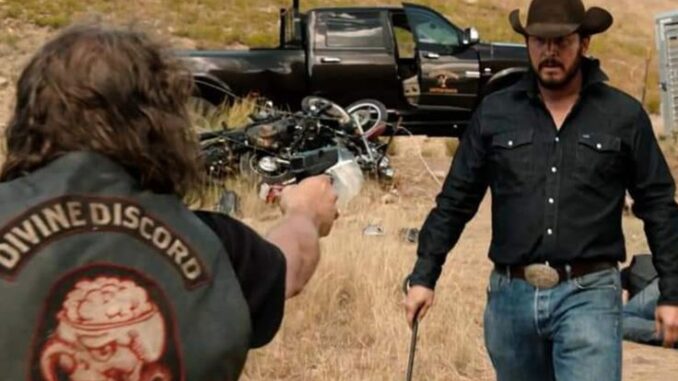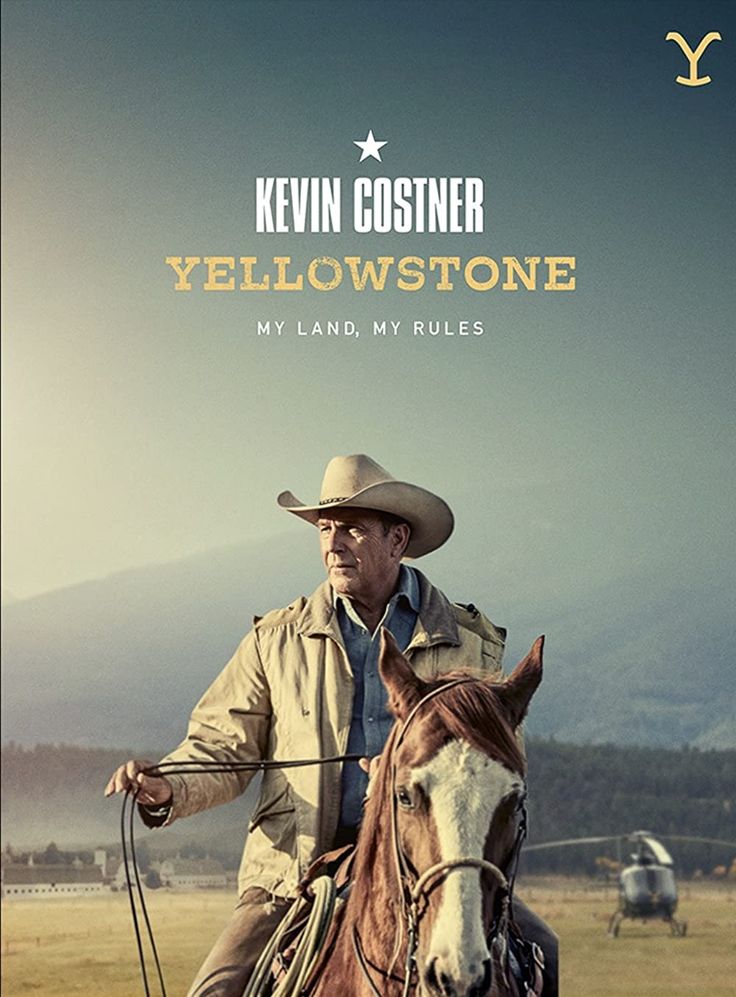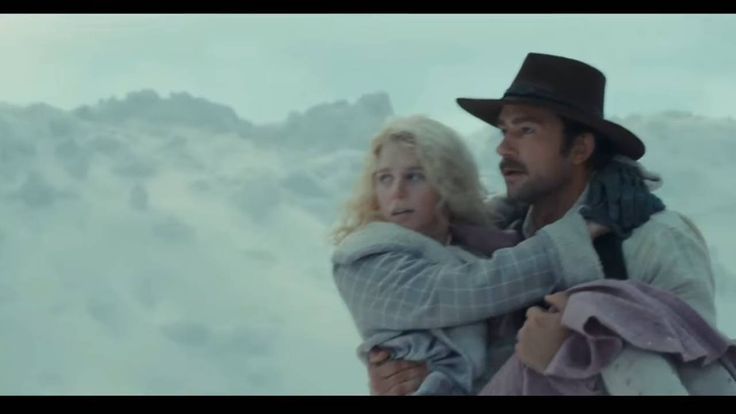
Let’s cut through the tumbleweeds here. When Yellowstone galloped onto our screens, fans of dusty towns, cowboy hats, and showdown drama rejoiced. Finally, a Western that felt modern. Gritty. Stylish. But here’s the twist no one saw coming: Yellowstone didn’t revive the Western genre — it quietly murdered it.
Sounds dramatic? It is. But stay with me. Once we peel back the layers of this powerhouse drama, the reality becomes clear: what Taylor Sheridan created wasn’t a renaissance; it was a funeral in disguise.

Why Everyone Thought Yellowstone Was Saving the Genre
When Yellowstone first aired in 2018, it felt like lightning in a bottle. With Kevin Costner leading the charge and the Montana landscape stealing every scene, it looked like the Western was back, baby!
Streaming services were buzzing. Networks scrambled to greenlight cowboy-themed shows. Viewers dusted off their Stetsons and boots. For a hot minute, we were all in.
But here’s the kicker — what came after wasn’t revival. It was stagnation.
The Rise of a Franchise That Overshadowed the Genre
Sheridan didn’t just create a show. He built a universe. Prequels like 1883 and 1923 followed, each one beautifully shot, dramatically intense, and entirely focused on the Dutton legacy.
Sounds good, right?
Not exactly. Because while Sheridan was busy expanding his dynasty, something weird happened: nobody else got a seat at the table. Westerns became synonymous with Yellowstone — and only Yellowstone.
Copycats, Clichés, and Creative Laziness
Instead of inspiring a new wave of creative Westerns, Yellowstone sparked a sea of bland imitations. Everyone wanted to replicate the formula: brooding patriarch, family feuds, cowboy hats, and a whole lot of slow-motion horse shots.
The result? A genre that started to eat itself alive.
Where was the innovation? Where were the fresh takes? Gone. Buried beneath layers of melodrama and leather jackets.
The Genre Became a One-Trick Pony
Here’s the problem with monopolies — they suffocate everything else. Yellowstone dominated the genre so completely that it left no room for experimentation.
You want a sci-fi Western like Firefly? Nope.
A comedy-Western? Crickets.
Even classic-style Westerns with a twist — nowhere in sight.
When one show becomes the genre, you’ve got a problem.
Let’s Talk About Grit — Real vs. Manufactured
One of Yellowstone’s biggest selling points is its “grit.” But real grit isn’t just about characters scowling under cowboy hats. It’s not about over-the-top violence or long monologues about loyalty and land.
True grit comes from tension, stakes, character development. Think Unforgiven. Think Deadwood. Grit is earned, not sprayed on like TV cologne.
Yellowstone, for all its swagger, often feels like it’s trying too hard to be tough. And that posturing? It doesn’t leave room for nuance.

The Prequel Problem: When Backstory Replaces Innovation
1883 and 1923 were meant to deepen the mythology. And in some ways, they did. The cinematography? Gorgeous. The performances? Solid.
But here’s the issue — they didn’t expand the genre. They narrowed it. Everything had to tie back to the Dutton legacy. Instead of exploring new frontiers, we just circled the same dusty wagon.
It’s like watching a Western in a snow globe — pretty, but contained.
The Myth of the “Modern Western”
Yellowstone fans love to say it’s a “modern Western.” But what does that really mean?
If modern just means characters using cell phones while riding horses, we’re not exactly pushing the envelope. There’s nothing wrong with updating a genre — but a true modern Western would reimagine it, not just re-dress it.
Imagine a Western set in the inner city. Or a story about immigrant cowboys. Or Indigenous-led narratives that challenge old tropes.
We didn’t get that. We got more Duttons.
The Lack of Diversity in the Western Revival
Let’s be real: Yellowstone didn’t exactly shatter diversity barriers. Westerns have a long, ugly history of erasing or stereotyping Indigenous, Black, Latino, and Asian characters.
Did Sheridan do better? A little. But nowhere near enough.
And with Yellowstone setting the tone, other shows didn’t dare to color outside the lines. Which means entire perspectives got left in the dust — again.
What Yellowstone Could Have Done (But Didn’t)
Let’s play what-if.
What if Yellowstone had spotlighted different kinds of ranchers?
What if the prequels told stories from the viewpoint of women, Native tribes, or immigrants carving out lives in the West?
What if the spinoffs weren’t spinoffs, but bold, genre-defying standalones?
Instead, we got one family, one style, and a whole lot of the same.
Why the Western Genre Needed a Real Revival

Westerns aren’t just about cowboys. They’re about survival, morality, freedom, and frontier justice. That’s a rich playground for writers, especially today.
With the right vision, the genre could explore climate change, land ownership, justice reform, and modern identity. It could be powerful, relevant, and deeply human.
Instead, we got a soap opera on horseback.
Sheridan’s Success Became the Genre’s Coffin
It’s a paradox. Sheridan’s success was so massive, it crushed competition.
Networks didn’t greenlight new kinds of Westerns — they greenlit Sheridan-style Westerns.
It’s like asking for jazz and only being allowed to hear Kenny G. Smooth? Sure. But where’s the soul? Where’s the range?
Audiences Deserve More Than Just Dutton Drama
We get it — the Duttons are complicated. But six seasons, two prequels, and several spinoffs later, it’s hard not to feel exhausted.
The problem isn’t that Yellowstone exists. It’s that it sucked all the oxygen out of the room.
There’s more to the Western genre than one family’s land disputes.
What the Genre Needs to Come Back From the Dead
For Westerns to truly rise again, here’s what we need:
-
Diverse creators. Bring in new voices.
-
Fresh settings. Swap Montana for Mexico, Texas for Tokyo.
-
Genre hybrids. Westerns-meet-horror? Yes, please.
-
Modern themes. Talk about borders, justice, power.
The Western genre isn’t dead. But to come back, it needs to escape the long, looming shadow of the Dutton empire.
Conclusion: The Saddest Irony of All
Yellowstone was supposed to be a resurrection. Instead, it became a monument. A slick, stylish, bullet-riddled headstone for what Westerns used to be — and what they could have become.
If we want real Westerns again — bold, diverse, modern — we’ll have to break the mold Yellowstone created.
Or better yet… burn it down and start fresh.
